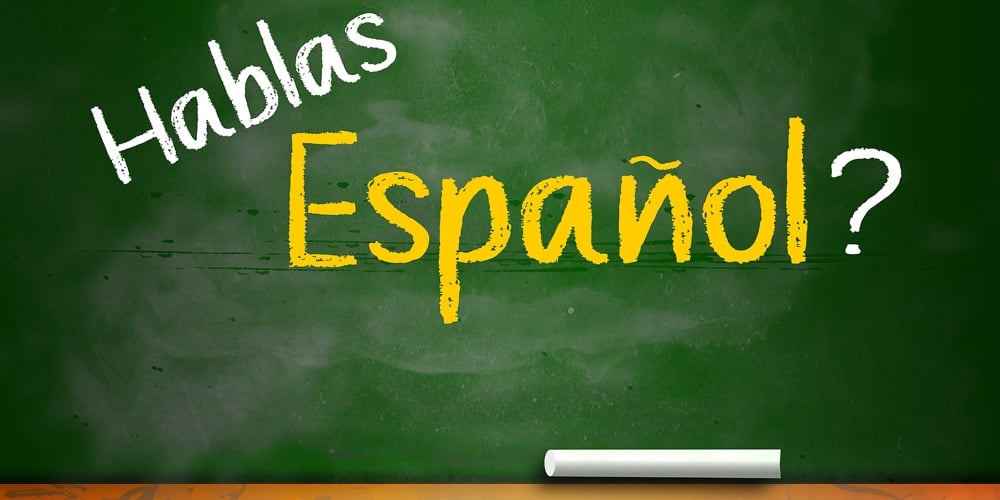Expanding your reach through the power of translation

Growing up as an immigrant, I was my parents’ translator. As soon as my siblings and I learned enough English to be considered fluent, we began translating at parent-teacher conferences, at stores when our parents had to make a return, or to order delivery on the weekends. Our parents’ 8-5 jobs didn’t allow for much time to take English classes – and when they did have time, they tried to spend most of it with us. Their inability to communicate in English created many barriers for them financially and professionally, including opening bank accounts to applying for loans and starting their own business. In the early 2000’s there were few financial resources in Spanish available in our community.
In this day and age, I get frequent ads on Hulu, Peacock and other streaming services in Spanish. From insurance agencies to car dealerships and big banks, companies are translating their messaging to Spanish. When I take a walk at the local park, the “Park Rules” are now listed in English and Spanish. At my local DMV office, residents have the option to take their written driver’s test in Spanish. Government entities, schools, and hospitals have invested in Spanish materials and hired bilingual staff, because Spanish communication is no longer a “nice to have” but a requirement to fully serving communities. As many industries make adjustments and changes to accommodate Spanish language, credit unions can’t be left behind.
Credit unions are increasingly seeing value in creating growth strategies to increase multicultural membership, including ways to be more effective at communicating with members in their preferred language. To support these initiatives, it is critical that credit unions develop specific benchmarks to successfully implement multicultural strategies – such as hiring bilingual personnel, community development partnerships and translating materials. It is essential to methodically track progress for each of these benchmarks on an annual basis in order to prioritize which needs are being met in a timely manner and consider if new benchmarks need to be created to reach the goal of enhancing member communications.
There are over 42.5 million Spanish-speaking individuals in the U.S., making us the 2nd largest population of Spanish-speakers in the world! More and more companies are making the decision to translate, market and create user-experiences in Spanish, not as a new strategy but as a necessity. However, in the credit union industry it is often seen as a risk or legal implication. Coopera’s history of tracking Hispanic member growth in the credit union industry proves that the leading ethnic group to growing credit union membership is Hispanics. Not only are Hispanics increasing credit union membership, but they are lowering the average age of members, with many of them being under the age of 40, making them the most active in their financial needs. Coopera’s data shows that the top trending products with Hispanic members are checking accounts and auto loans, and there are high penetration rates with mobile banking apps and debit card usage. The business case for Spanish resources is significant, but where does a credit union begin to translate materials?
During my time at Elevations Credit Union, a $3B asset size credit union in Colorado, I began the translation process by auditing all the forms and materials we could translate. I didn’t realize what an undertaking this was until I got started! The questions started rolling in: How do we prioritize, track and manage the files we translate? How do we create processes for translating, reviewing and auditing files on a yearly basis? What kept the process from being overwhelming was remembering that the goal was not how fast we could translate materials, but how effective and efficient we could be while doing so.
Here are five steps to consider when starting your translation journey.
- Gain buy-in from credit union leaders: You have the data, you know the competitors in your area, now you need support. A translation strategy will need resources and a budget.
- Hire a translations vendor (Yes – even if you have bilingual employees): A professional translator will ensure your translations are accurate and relevant. And no, Google Translate does not count.
- Hold a meeting with your compliance team: Compliance teams will provide the project champion with guidance in prioritizing compliant forms, letters and notices.
- Create an internal bilingual team to review the translations: While most translation vendors review translations, you will want to make sure that an internal staff member (or two) reviews the translations for accuracy. Who do you want to find an error, an employee or a member?
- Prioritize your materials and EXECUTE: You can use Tier I, II, and III or from Easy, Intermediate, to Hard. Which materials can you translate immediately? Which materials will take you the most time to translate? What can you translate in-house and what needs to be sent to a vendor?
The most common barrier we see from our clients is internal bilingual capabilities. Our advice? Don’t let this be the reason you don’t start! While increasing the number of bilingual staff members should likely be a top priority for your credit union, you shouldn’t let a lack of bilingual staff derail your growth initiatives. Chances are that you have already attracted Spanish-speaking members and they will continue to bank with you, so why not improve their member experience? There are both temporary and permanent solutions that can solve your limited bilingual capabilities. Consider hiring an over-the-phone interpreting service, so credit union staff can serve non-English speaking members. Another solution is expanding availability of your bilingual personnel within the organization, this could be done by building an internal bilingual directory, creating an email group (example: español@abccu.com), or a hunt group number that distributes calls to bilingual staff members’ direct lines.
Here are some of the “low hanging fruit” we recommend our clients translate at the beginning of their translation journey:
- Branch notices (Holiday closures, early closures, etc.)
- Fee schedules
- Product flyers
- Ways to identify bilingual staff members (business cards or name tags)
Translating these materials will guarantee to improve member experience, while creating a welcoming and inclusive atmosphere. “Hispanohablantes” will appreciate any effort grande or pequeño. Taking on projects addressing multicultural growth strategies can be overwhelming, but if done correctly, these initiatives deliver impactful benefits to both credit unions and the members they serve. Don’t be afraid to seek out the necessary resources, tools or partners, like Coopera Consulting, to help make the transition seamless and impactful for all involved. Credit union members come from many different backgrounds, cultures and languages, and a “one size” approach does not always include all. The opportunity to expand your products and services through the power of translation is one we hope you take advantage of.





